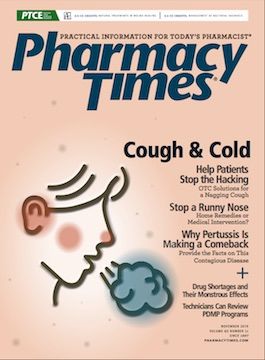Publication
Article
Pharmacy Times
Vaccination Delivery Makes a Huge Impact
Author(s):
Community pharmacy-based immunization services have a proven track record for serving patients.
In 1997, the US Department of Health and Human Services called upon the American Pharmacists Association to help create a policy to involve pharmacists in providing vaccination services. Since then, pharmacists have received certified training in administering vaccinations, which has resulted in an increase in vaccination rates for the general public.
In many states, children can be vaccinated by pharmacists, but states have different requirements. In those states that allow pharmacists to administer vaccinations, children, depending on their age, might get vaccinated for chicken pox, diphtheria, flu, measles, mumps, polio, rubella, tetanus, and whooping cough.
Although community pharmacy-based immunization programs have proven their success, they still face hurdles. Regulations, which vary from state to state, prevent pharmacies from taking full responsibility for vaccinations. Compensation and reimbursement programs might be handled differently by each state. Even so, pharmacies provide convenient and efficient access to public health education, which enhances the value of their services to patients and provides an opportunity for pharmacies to cross-sell other products and services.
Community pharmacy—based immunization services have a proven track record for serving patients. Uniform legislation and consistency across pharmacy information management systems and reimbursement programs can help make immunization programs even more effective.
Bob is the proprietor of Bob’s Pharmacy in Small Town, USA. His wife Sally is also a pharmacist. They serve their community by providing quality pharmacy services. Customers who have health care—related questions often turn to Bob and Sally first. The helpful advice they have provided over the years has established their reliability and trustworthiness.
Now it is flu season, so Bob’s Pharmacy has decided to take walk-in patients for the first time. Both Bob and Sally successfully completed a training and certification course in administering vaccines. Initially, they considered bringing in a nurse to administer the vaccines, but they decided to provide the vaccines themselves to patients on a walk-in basis, because they could do so at the lowest cost and simultaneously increase pharmacy revenue. Bob’s Pharmacy could also maximize vaccination rates in the community. On one hand, the most convenient choice for a patient is simply to walk into Bob’s Pharmacy and get a vaccination. However, Bob has to have in stock a broad range of vaccines, because there is no way to anticipate the needs of walk-in patients.
Sally set up a separate area for the vaccinations, and Bob checked with his attorney to make sure that he was in compliance with state laws and regulations. In some states, a statute might allow him to administer flu shots without a protocol; however, he had to put in place a protocol with a local physician who was able to sign prescriptions and standing orders for multiple pharmacists. It was going to be a busy time of year with back-to-school vaccinations and flu shots.
A middle-aged professional woman approaches the pharmacy counter. Bob interrupts the prescription he is preparing to take care of her.
“Can I get a flu shot here?” she asks.
“Yes, of course. Just give me a moment, please,” Bob says.
He takes note of what remains to be done with the interrupted prescription, a minor inconvenience compared with the resulting benefits of administering the flu shot. As he is preparing the vaccination, the patient tells him, “I always get a flu shot. My great-grandfather’s sister died of influenza in New York.”
Bob asks if that happened during the 1919 influenza pandemic.
“Why, yes. How did you know?” the patients asks.
“Oh, we learned about it in pharmacy school,” Bob says.
In 1919, almost a third of the US population was infected during an influenza pandemic. An estimated 500,000 to 675,000 Americans died, mostly very old and young patients.
In pharmacy school, Bob recalls a professor saying that more people died of the flu during the pandemic than the Black Death killed in 100 years. If this woman’s great-grandaunt had enjoyed the convenience of a walk-in vaccination, she would have likely lived longer. How times have changed, Bob thinks. Nowadays, people just walk in for a flu shot, take it for granted, and never think about how lucky they are.
Ned Milenkovich, PharmD, JD, is chairman of the health care law practice at Much Shelist PC in Chicago, Illinois, and the former vice chairman of the Illinois State Board of Pharmacy.







